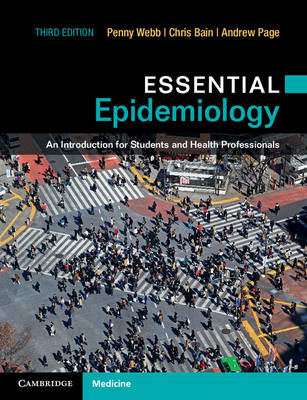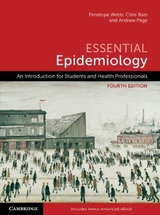
Essential Epidemiology
Cambridge University Press (Verlag)
978-1-107-52915-1 (ISBN)
- Titel erscheint in neuer Auflage
- Artikel merken
Taking a practical approach and supported by global examples from all areas of health, the new edition of this popular and highly commended textbook has been updated to reflect current epidemiological thinking and teaching. Based on feedback from teachers and students, material has been reordered to better suit courses and reflect the underlying logic and purpose of epidemiology. • Provides students with a rounded picture of the field by emphasizing the commonalities across different areas of epidemiology, including clinical epidemiology, and highlighting the key role of epidemiology in public health • Avoids complex mathematics by restricting this to optional material, thereby keeping the book accessible to students from non-quantitative backgrounds • Integrated and supplementary questions help students to reinforce concepts • A wealth of online material is available at www.cambridge.org/essential_epidemiology, including additional questions, advanced material for key concepts, recommendations for further reading, links to useful websites and slides for teaching, supporting both students and teachers.
Penny Webb is a Principal Research Fellow at the QIMR Berghofer Medical Research Institute and Honorary Professor at the School of Public Health, University of Queensland. Chris Bain is a Visiting Scientist at the Queensland Institute of Medical Research. Andrew Page is Professor of Epidemiology at the Centre for Health Research, School of Medicine, University of Western Sydney.
Preface; 1. Epidemiology is …; 2. How long is a piece of string? Measuring disease frequency; 3. Who, what, where and when? Descriptive epidemiology; 4. Healthy research: study designs for public health; 5. Why? Linking exposure and disease; 6. Heads or tails: the role of chance; 7. All that glitters is not gold: the problem of error; 8. Muddied waters: the challenge of confounding; 9. Reading between the lines: reading and writing epidemiological papers; 10. Who sank the boat? Association and causation; 11. Assembling the building blocks: reviews and their uses; 12. Surveillance: collecting health-related data for epidemiological intelligence and public health action Martyn Kirk and Adrian Sleigh; 13. Outbreaks, epidemics and clusters Martyn Kirk and Adrian Sleigh; 14. Prevention: better than cure?; 15. Early detection: what benefits at what cost?; 16. Epidemiology and the public's health; Answers to questions; Appendix 1. Direct standardisation; Appendix 2. Standard populations; Appendix 3. Calculating risk and lifetime risk from routine data; Appendix 4. Indirect standardisation; Appendix 5. Calculating life expectancy from a life table; Appendix 6. Why the odds ratio approximates the relative risk for a rare disease; Appendix 7. Formulae for calculating confidence intervals for common epidemiological measures; Appendix 8. The Mantel–Haenszel method for calculating pooled odds ratios; Glossary; Index.
| Erscheinungsdatum | 06.01.2017 |
|---|---|
| Zusatzinfo | 66 Tables, black and white; 33 Halftones, black and white; 55 Line drawings, black and white |
| Verlagsort | Cambridge |
| Sprache | englisch |
| Maße | 190 x 246 mm |
| Gewicht | 990 g |
| Themenwelt | Studium ► Querschnittsbereiche ► Epidemiologie / Med. Biometrie |
| ISBN-10 | 1-107-52915-8 / 1107529158 |
| ISBN-13 | 978-1-107-52915-1 / 9781107529151 |
| Zustand | Neuware |
| Informationen gemäß Produktsicherheitsverordnung (GPSR) | |
| Haben Sie eine Frage zum Produkt? |
aus dem Bereich



